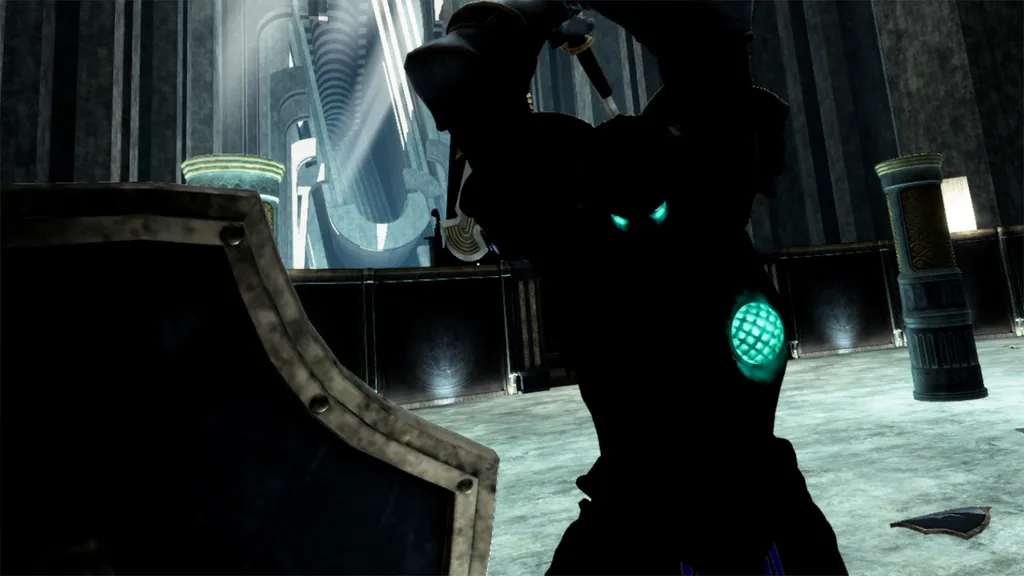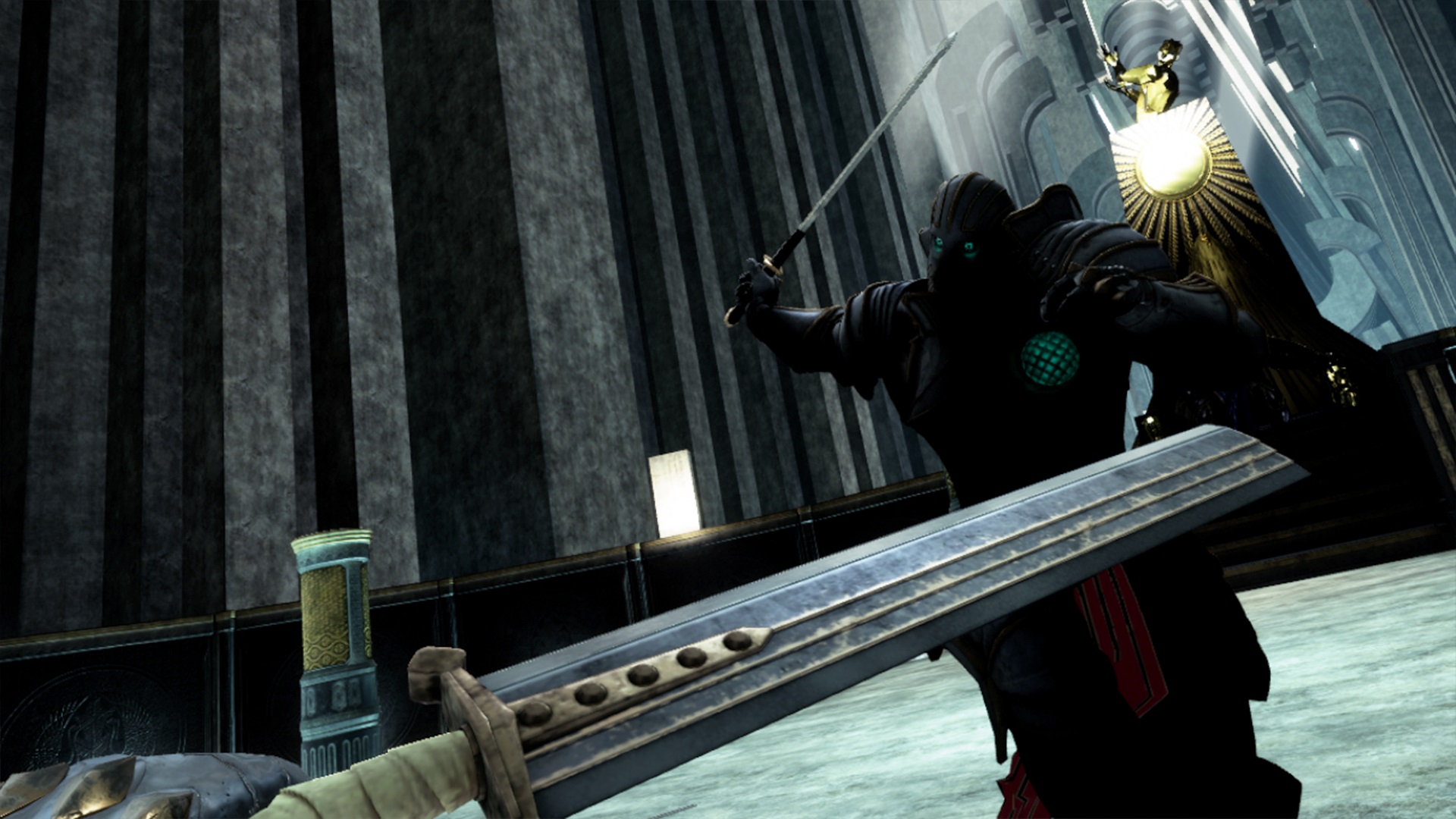Stop me if you’ve heard this one before: the game I just played reminded me of Dark Souls.
Wait, wait, don’t head to the comments to berate me just yet. I promise I’m not making that comparison because I died a couple of times or I saw a giant spider. Instead, it’s pretty much everything else about Swords of Gargantua that reminds of me From Software’s ode to masochism.
Gargantua, like many other VR adventures, desperately wants to get melee combat right, but on its own terms, much like in the way From did all the way back in 2009 with Demon’s Souls. It wants to steer clear of the messy physics of a thousand other Early Access titles as well as the easily-cheated, bolted-on motion controls of Skyrim VR. The free demo released last week suggests that it could well pull it off, though there’s a little more refinement required.
Gargantua’s demo does well to capture the isolated exploration of the Souls games. Even in the few corridors you trek down, there’s a sense that you’re trespassing, as if the howling winds are a warning to leave the ancient halls. A splash of Sony’s ICO is present, too, though it’s more menacing at its core.
Locomotion is simple enough, either using smooth movement or a leaning system. Eventually you enter an arena, lazily observed by a monarchic monster sitting on a throne, with towering walls surrounding you. What the art design lacks in detail, it makes up for in tone and scale. Minions twice your height slowly start to approach, proving effectively daunting as they attempt to corner you. It’s pretty clear from the start you’ll be in for a tough battle.
Combat makes some pretty sensible decisions. You can dual-wield, but you’re most likely to be using one of your weapons as a defensive measure. Every enemy swing can be blocked, which causes them to bounce back a little, leaving an opening for you to attack. I found myself tightly focused on my opponent’s movements, trying to anticipate their next attack and prepare my block with my left arm while readying my counter with the right. You can charge swings by holding your blade above your head and even toss swords at enemies to give you a bit of space as you search for a new weapon.
There’s rare heft to Gargantua’s combat. Your items won’t simply phase through each other, for example, instead dragging along each other and preventing any kind of maniacal arm-swinging. They don’t feel like they slice so much as batter, with damage coming from the crash of connecting with heavily-plated armor. A stamina gauge implements some pacing, too, though reading it is a little confusing at this point in time.
Gargantua’s battles had me thinking about what was going on. A helpful lock-on system allows me to focus on other matters, like my positioning and distance from other enemies. Rather than barreling in, slashing away until my enemy slumps to the floor, I found myself taking patient, well-timed swings before backing away to reassess my situation.
It still needs a little work, though. Sword fights are in need of a little more impact; I sometimes couldn’t really tell if my attacks were doing anything more than nudging my enemy backwards, for example. Sometimes blocking didn’t really seem to work for me, either, and it wasn’t clear if this was because I wasn’t angling my blade in the right way or if my choice of defense simply wasn’t suitable. These are issues with clarity, though, that I’m sure could be moped up.
Right now, though, I’m more interested to see how Swords of Gargantua shapes up as a full game in time for its full release. While the combat is its hook, it feels like there could be more to the story here, and it would be a shame to see that go to waste on a series of simple arenas. Expect the game to launch on the HTC Vive and Oculus Rift.



























